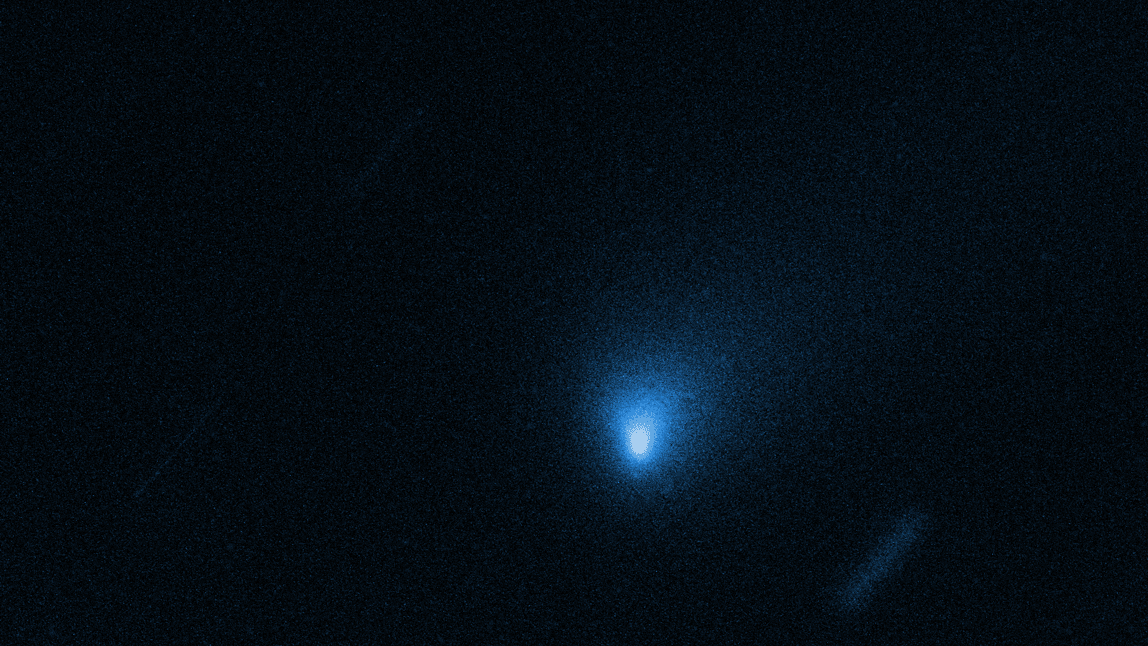Watch interstellar comet 2I/Borisov hurtle through space in this Hubble time-lapse

NASA’s Hubble Space Telescope has taken the best observations yet of 2I/Borisov, the first comet we've ever spotted visiting the solar system from interstellar space. The observations have been turned into a time-lapse that show the comet hurtling through space, 260 million miles away.
So, what can I see in this GIF: Hubble took the images over a seven-hour period on October 12. In them, you can see the central collection of dust and gas around the tiny nucleus of the comet in greater focus than before. The streaks of light zipping past are stars (plus one satellite) caught in the frames as Hubble tracks the comet’s progress at high speed.
The background: An amateur astronomer from Crimea first discovered 2I/Borisov in late August, and subsequent analysis of its trajectory and velocity confirmed it did not originate from the solar system. Astronomers soon spotted all the signs that pointed to the presence of a comet: a 6.2-mile-long tail, a hazy coma, and hydrogen cyanide gas shaving off the top, among other factors.
In fact, there really isn’t much that makes 2I/Borisov unique besides that fact that it came from outside the solar system. It’s quite unlike ‘Oumuamua, the first interstellar visitor on record, which was spotted in late 2017; it sported a bizarre rod shape and inexplicable acceleration as it exited the inner solar system.
What’s next: 2I/Borisov is zipping through the solar system at 110,000 miles per hour and should make its closest flyby of the sun on December 7. By mid-2020, the comet will speed past Jupiter, about 500 million miles away, and continue on its path back into interstellar space.
Deep Dive
Space
How to safely watch and photograph the total solar eclipse
The solar eclipse this Monday, April 8, will be visible to millions. Here’s how to make the most of your experience.
How scientists are using quantum squeezing to push the limits of their sensors
Fuzziness may rule the quantum realm, but it can be manipulated to our advantage.
The race to fix space-weather forecasting before next big solar storm hits
Solar activity can knock satellites off track, raising the risk of collisions. Scientists are hoping improved atmospheric models will help.
Stay connected
Get the latest updates from
MIT Technology Review
Discover special offers, top stories, upcoming events, and more.